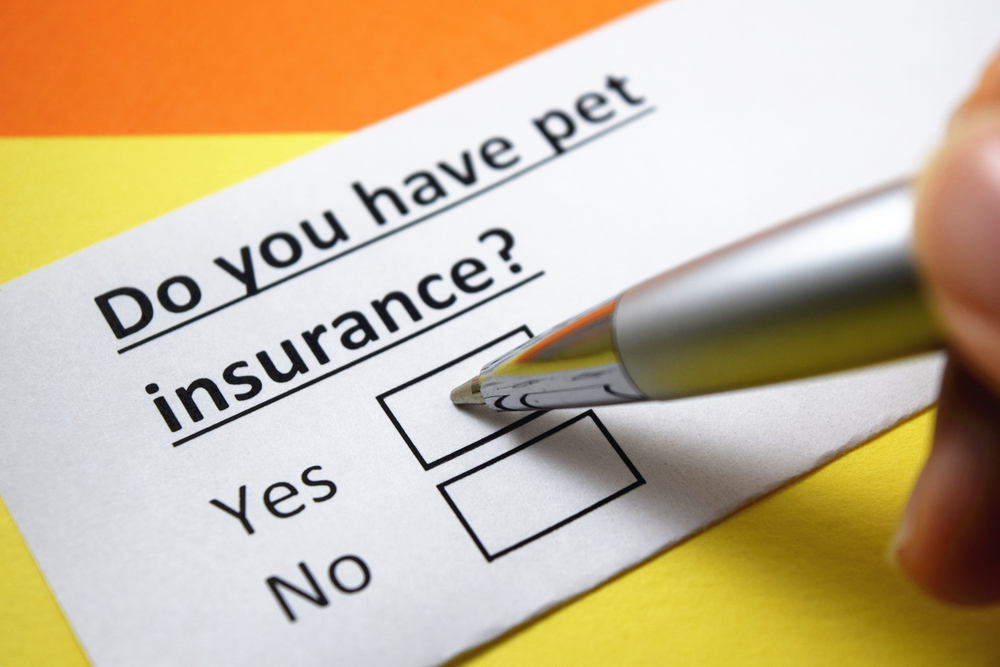If your pet becomes seriously ill or injured, would you have to limit their care because of your financial situation? According to a Synchrony study, one in four pet owners would be stressed by an unexpected veterinary expense of $250 or less, as they would have difficulty with the finances. With pet care costs on the rise—along with products and services in every other industry—a pet health insurance policy’s premiums will pay for themselves in the long run.
If you haven’t taken the plunge and purchased a pet insurance policy, let our Wellness Animal Hospital team walk you through everything you need to know, from understanding the basics to choosing the right plan for your four-legged friend.
What is pet health insurance?
Pet health insurance is a financial safety net for routine and unexpected veterinary expenses. Insurance covers a range of medical treatments, surgeries, and preventive care for your pet, including general and emergency care, and some policies allow you to seek specialist, holistic, or alternative care. Similar to human health insurance, pet insurance helps pet owners manage veterinary care expenses, and ensures their pet receives the best possible treatment without breaking the bank.
How does pet health insurance work?
Understanding the workings of pet health insurance is crucial for making an informed decision about a policy. Here’s a breakdown:
- Coverage options — Policies generally fall into one of three coverage options—accident-only, comprehensive, or wellness care.
- Accident-only coverage provides assistance only for acute injuries, excluding illnesses and hereditary conditions.
- Comprehensive, or accident and illness, plans cover an extensive list of accidents, illnesses, and chronic conditions.
- Wellness plans cover routine exams, vaccinations, and other preventive care.
- Premiums and deductibles — Premiums and deductibles have an inversely proportional relationship, meaning your monthly premium will increase as your deductible decreases. Determine how much you can comfortably afford each month and in an emergency to cover the deductible.
- Reimbursement — Reimbursement rates and schedules vary greatly among providers. Some insurance providers pay your veterinarian directly at the time of your visit, while others may take weeks to reimburse you after you submit a claim. Additionally, you must determine if reimbursement amounts are limited. Annual, lifetime, or condition limits will affect the provider’s payment.
What does pet health insurance cover?
Understanding what your pet’s insurance policy covers is crucial to avoid unexpected expenses. Depending on the policy type you purchase, the following conditions are covered:
- Accident-only — Unexpected surgeries and injuries caused by accidents are typically covered, but not infections and other health conditions.
- Accident and illness — The most popular coverage type, these comprehensive policies cover the bulk of unexpected veterinary care. Diagnostic testing, non-elective surgeries, hospitalization, and treatment for a wide range of illnesses and injuries are covered under this umbrella policy.
- Wellness — Wellness plans generally cover routine health care that consists of wellness exams, vaccinations, screening tests, and parasite prevention.
- Dental care — Most insurance policies do not cover dental care unless purchased separately. Pets who are prone to dental disease, such as dachshunds and Yorkies, should be covered by dental care insurance.
- Additional riders — You can purchase additional coverage for care outside “regular” veterinary care, such as behavioral therapy, training, rehabilitative treatment, alternative therapies, prescription diets, supplements, or end-of-life care.
What factors should I consider when choosing a pet health insurance plan?

When comparing pet insurance policies, the following factors will influence rates and coverage:
- Your pet’s age — Premiums often vary based on your pet’s age, increasing with advancing age.
- Your pet’s breed — Some breeds are prone to specific health issues, so you will want to ensure coverage for hereditary or genetic health conditions is included.
- Coverage exclusions — While no insurance provider covers pre-existing conditions, degrees of laxity may allow for some coverage loopholes.
- Waiting periods — Waiting periods before coverage begins vary from provider to provider and policy to policy. Certain health conditions also influence waiting periods. For example, orthopedic conditions like ruptured cranial cruciate ligaments may not be covered for the first 6 or 12 months, but respiratory infections may require a waiting period of only two weeks.
Investing in pet health insurance proactively ensures your furry pal’s well-being without compromising on quality care. By understanding coverage options and choosing the right plan for your pet’s individual needs, you’re taking a significant step toward a tail-wagging, healthy future for your four-legged friend.
Unraveling pet health insurance policies can be a challenge if you haven’t evaluated plans before. Rely on our Wellness Animal Hospital team for guidance on navigating pet insurance policies, so you can find the ideal plan that suits your pet’s needs.







Leave A Comment